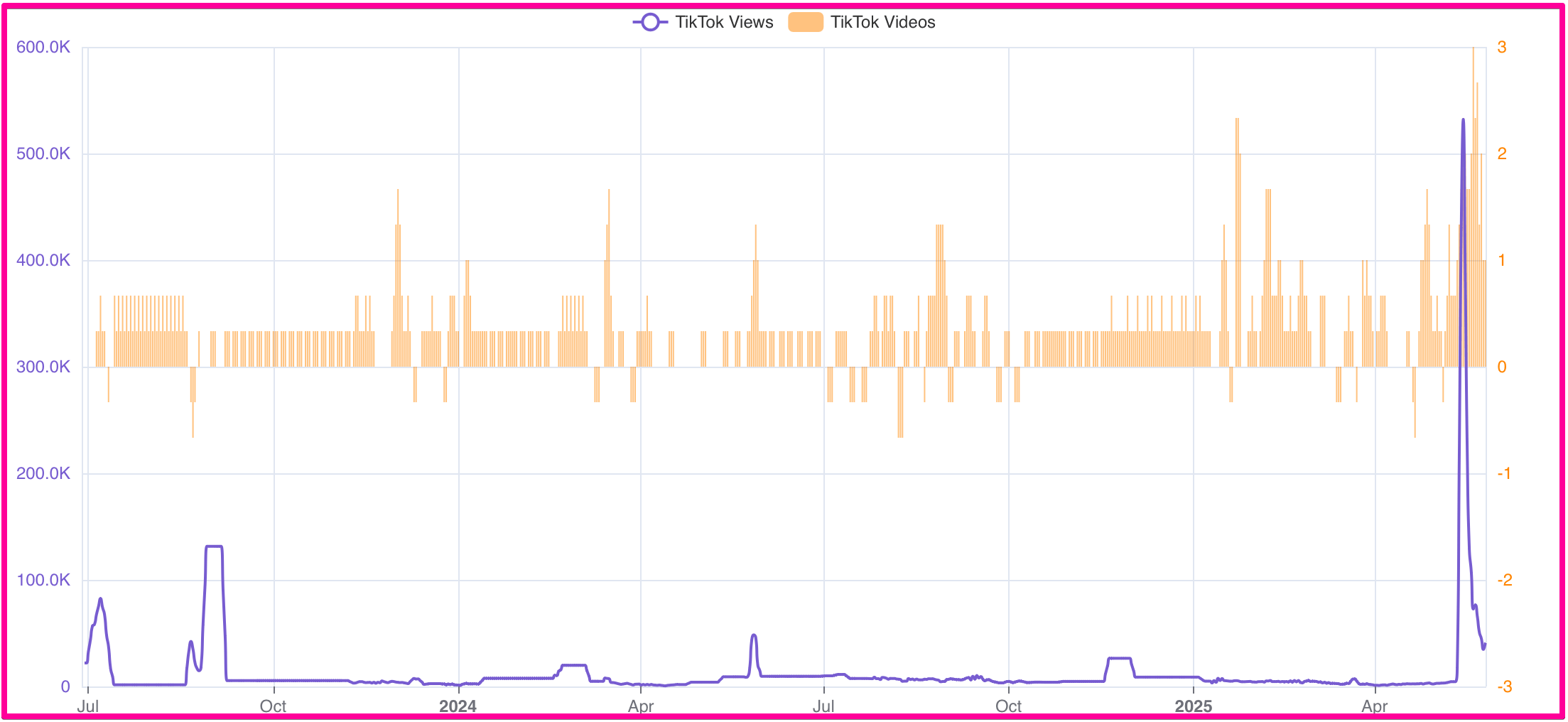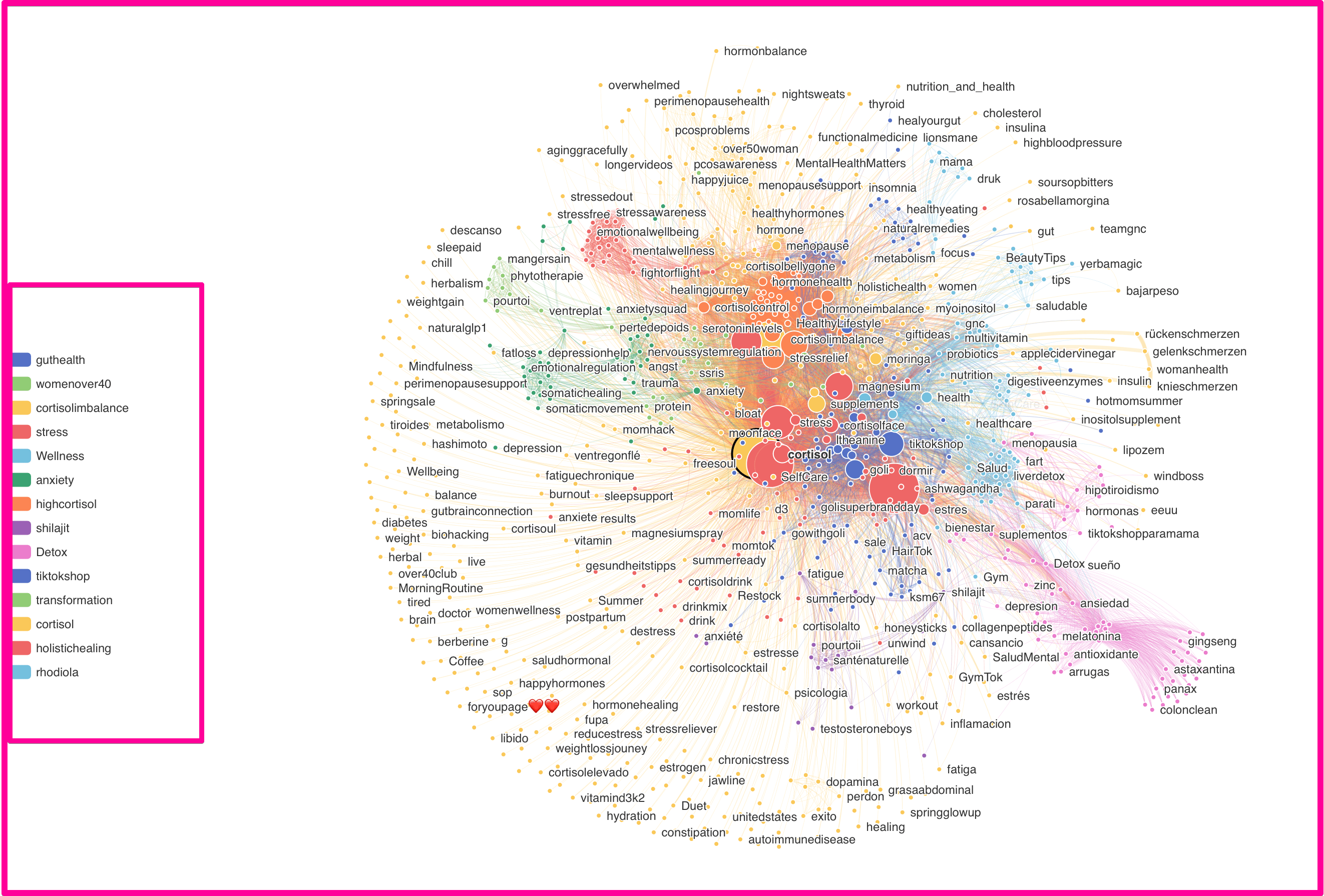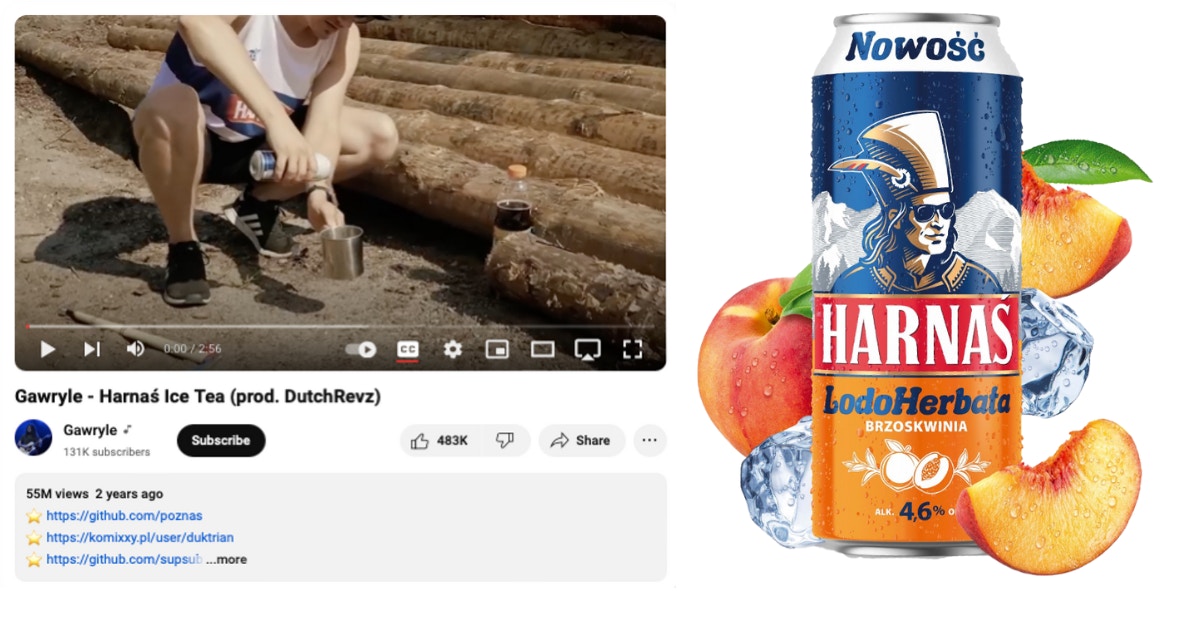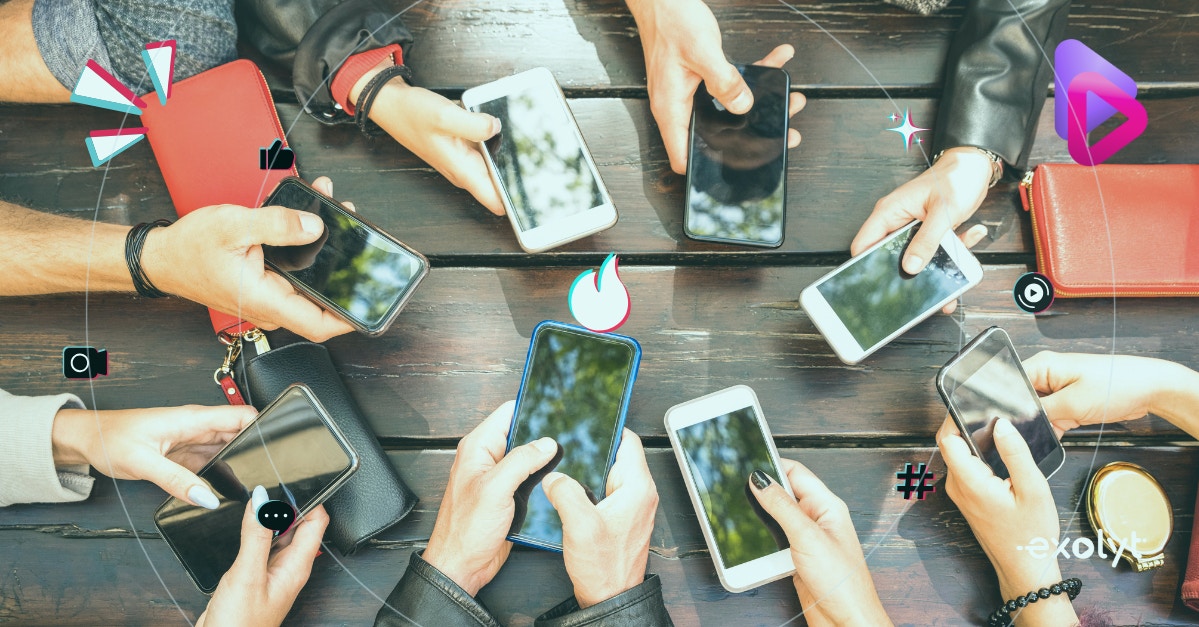En los últimos años, TikTok se ha convertido en mucho más que una plataforma de videos de formato corto. Hoy es un ecosistema vivo de expresión cultural, un espacio donde el significado se construye, se negocia y se remezcla en tiempo real. Para investigadores, estrategas y profesionales de marketing que buscan comprender a las personas más allá de las métricas, TikTok ofrece algo singularmente valioso: acceso directo a los códigos culturales y a las microculturas que moldean la forma en que las personas ven el mundo.
TikTok no es solo tendencia, concentra una riqueza cultural única
La mayoría de las marcas persiguen lo que es tendencia en las redes sociales, a menudo perdiendo de vista lo que realmente significan las tendencias auténticas. Ciertamente, hay valor en el marketing en tiempo real y en el compromiso con el contenido viral, pero es importante reconocer que muchos de estos momentos son fenómenos efímeros.
Las marcas impulsadas por el FOMO (miedo a perderse algo) corren el riesgo de pasar por alto cambios más profundos y a largo plazo en el comportamiento del consumidor y las necesidades culturales. Muchos especialistas en marketing se preocupan de que las tendencias sean cada vez más cortas. Pero la verdad es que: las tendencias no están desapareciendo; es solo que la línea entre lo que es una tendencia y lo que simplemente está en tendencia se ha vuelto cada vez más difusa.
TikTok a menudo se percibe como una plataforma de picos rápidos de atención, pero también puede revelar algo mucho más profundo: las historias, símbolos e identidades subyacentes que impulsan el comportamiento colectivo. Desde la jerga y las elecciones de sonido hasta los estilos visuales y las bromas internas, TikTok es una mina de oro para decodificar cómo se crea, comparte y disputa el significado cultural.
Como sugirió el antropólogo Franz Boas hace más de un siglo, todos usamos ”gafas culturales” (kulturbrille) que moldean nuestra percepción de la realidad. TikTok ofrece una visión incomparable de estas lentes, especialmente para comunidades que están subrepresentadas o ignoradas en los medios de comunicación tradicionales.
Las tendencias arraigadas en cambios culturales, sociales o psicológicos a menudo se ven eclipsadas por los altibajos de los ciclos virales. Para comprender verdaderamente lo que está sucediendo, necesitamos conectar las señales aisladas con su contexto cultural compartido.
Tomemos el cortisol, por ejemplo. Si bien es fácil identificar picos como el “matcha de cortisol” en TikTok, un análisis más profundo revela una creciente conciencia cultural en torno al manejo del estrés y las hormonas, así como las estrategias que las personas están desarrollando para afrontarlo. Un análisis más profundo del contexto relacionado podría ayudar a identificar cambios importantes.

Pico de visualizaciones de #cortisolmatcha en TikTok
Fuente: Exolyt

Conversaciones relacionadas sobre el cortisol
Fuente: Exolyt
¿Qué haría Malinowski en TikTok?
Bronisław Malinowski trasladó la investigación antropológica del escritorio al trabajo de campo. La esencia del trabajo de campo consistía en acudir al entorno natural del objeto de estudio. Con el desarrollo de Internet en la antropología, surgió la pregunta: ¿Qué haría Malinowski? La respuesta fue sencilla para Christine Hine en su brillante Virtual Ethnography (2020). Consideró que, si las personas objeto de estudio trasladan su actividad al ámbito digital, quien investiga debería seguirlas.
La etnografía digital entiende las redes sociales como un entorno para realizar investigación de campo con todas sus ventajas:
- Observación participante del engagement orgánico
- Buscando una perspectiva interna (émica)
- Conocimiento tácito expresado en acción
TikTok es un gran lugar para identificar la cultura de internet y las prácticas culturales en general, y Malinowski sin duda lo observaría no solo mediante análisis e informes, sino haciendo trabajo de campo. Es decir, no se limitaría a una visión general de estadísticas y analítica en las apps, sino que optaría por una inmersión total en el contexto.
Estudio de caso: cómo Budget Beer se convirtió en un icono cultural
Un ejemplo perfecto de esta dinámica es Harnaś, una marca polaca de cerveza económica del Grupo Carlsberg que, de forma inesperada, se convirtió en un fenómeno en redes sociales. En 2021, apareció en YouTube una canción parodia titulada "Harnaś Ice Tea". Se burlaba de mezclar cerveza con té helado. Pero la broma cobró vida propia en TikTok, donde los usuarios empezaron a preparar versiones caseras de la bebida. Creadores e influencers se sumaron a la tendencia de manera orgánica. La audiencia se rió y luego se sumó. Carlsberg respondió con rapidez lanzando una versión con sabor del producto. El producto resultó ser un éxito de ventas.

Harnas Ice Tea
@jeleniewska przez TikToka cały czas nucę tę piosenkę😩😩 #trend #jeleniewska #polska #dc #dlaciebie
♬ Harnaś ice tea - Gawryle
Pero no fue casual. Meses antes, una investigación que realicé para Carlsberg había revelado una subcultura apasionada en torno a Harnaś. La gente no solo lo bebía; se identificaba con la marca. La marca representaba una inclusión sin filtros en un momento en que otras perseguían la exclusividad. Harnaś se convirtió en un símbolo de lo que podríamos llamar “pobreza premium”: un consumo irónico, orgulloso y culturalmente consciente, arraigado en la estética de la clase trabajadora. En el caso de Harnaś, el fenómeno creció de forma orgánica y dio lugar a comunidades diversas e incluso a moda personalizada. Esto es lo que TikTok puede revelar: no solo lo que hace gracia, sino lo que realmente importa.
Códigos culturales y el poder del contexto
El antropólogo francés Clotaire Rapaille introdujo el concepto de códigos culturales: significados inconscientes que determinan cómo respondemos a productos, comportamientos e ideas. En TikTok, estos códigos se manifiestan en segundos. Un baile no es solo un baile - es una referencia a una subcultura. Un chiste no es solo gracioso - es una prueba de si captas la referencia.
Estos significados suelen ser invisibles para personas ajenas. Por eso, la etnografía digital debe ir más allá de las métricas y adentrarse en la interpretación. Entender TikTok significa comprender cómo los usuarios construyen su identidad, expresan valores y se conectan a través de símbolos compartidos.
Microculturas: Los Verdaderos Impulsores del Cambio
Las microculturas, grupos pequeños pero influyentes con valores, estéticas o experiencias compartidas, prosperan en TikTok. Ya sea que los jugadores critiquen comportamientos tóxicos, las comunidades de moda recuperen la cultura de la segunda mano o los audiófilos se obsesionen con la calidad del sonido, estos grupos no son solo de nicho; son culturalmente potentes.
A menudo operan desapercibidas hasta que, de repente, se hacen visibles. La microcultura de hoy podría ser la microcultura de mañana. TikTok nos permite identificar estos puntos de inflexión culturales a medida que emergen.
Cómo realizar etnografía digital en TikTok
Realizar investigación relevante en TikTok requiere curiosidad, apertura y disciplina metodológica. Así puedes empezar:
- Sigue los hashtags, pero lee los comentarios - los insights más valiosos suelen estar en la conversación, no solo en el contenido.
- Analiza comportamientos, no solo las visualizaciones - observa cómo los usuarios remezclan tendencias, adaptan el lenguaje e interactúan entre sí.
- Sumérgete - sigue a los creadores, interactúa con el contenido y procura sentir la cultura desde dentro (perspectiva émica).
- Busque descripciones ricas en contexto: los pequeños detalles —un estilo de edición, una frase contundente o una broma recurrente— pueden revelarle mucho sobre los valores del grupo.
- Triangula - consulta hilos en Reddit, grupos de Facebook e incluso foros especializados para comprender el contexto más amplio.
Cómo evitar la trampa del “trendwashing”
Todos quieren aprovechar la ola. Pero apropiarse de los códigos culturales sin entenderlos suele volverse en contra. Las marcas que se lanzan a las tendencias sin comprender su contexto más profundo corren el riesgo de caer en lo que llamo ”trendwashing”: una imitación superficial que las audiencias reconocen de inmediato como poco auténtica. ¿La solución? No basta con observar las tendencias. Hay que entenderlas. Considera TikTok no como un canal de marketing, sino como un fenómeno cultural.
En un mundo de dashboards y sobrecarga de datos, los insights cualitativos nunca han sido más esenciales. TikTok ofrece una ventana a cómo las personas reales construyen sentido a través del humor, la ironía, la rebeldía y la comunidad. Es desordenado. Es caótico. Y precisamente por eso aporta valor.
La etnografía digital en TikTok nos permite pasar de contar menciones a interpretar el significado. Nos ayuda a plantear no solo “qué hace la gente”, sino “por qué lo hace así”. Para las marcas, los investigadores y quienes se interesan por la cultura, no es solo útil: es transformador.
Este artículo fue elaborado por el experto en inteligencia de redes sociales, etnógrafo digital y cazador de tendencias Marek Tobota, quien además es fundador de Data Tribe, una boutique de estrategia e investigación con sede en Varsovia. Marek cuenta con amplia experiencia en marketing y relaciones públicas y explora de forma constante nuevas metodologías de investigación cualitativa en Internet. Utiliza Exolyt principalmente para investigación focalizada que le permite obtener insights únicos sobre TikTok y sus comunidades de nicho. Para conocer más sobre Marek y su trabajo, conéctate directamente con él en su LinkedIn.
Explore Exolyt para su investigación de TikTok
Comience con una prueba gratuita de 7 días o conecte con nuestro equipo para obtener más información sobre las características de la plataforma y los posibles casos de uso.

